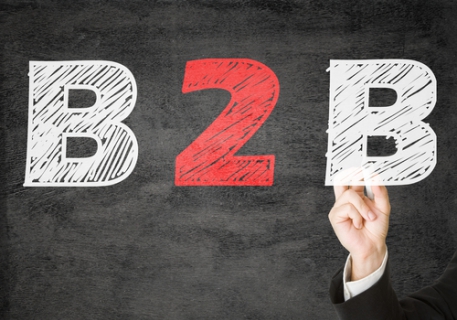Where Flexibility Can Help, And Hinder, B2B ACH Growth

NACHA, which oversees the nation’s automated clearinghouse system, has made great strides in recent years to help companies facilitate ACH B2B payments. This progress has helped especially large companies to take a lot of paper out of the remittance process. As NACHA’s Jan Estep noted in a recent PYMNTS.com podcast interview, more progress is needed to get smaller companies on board.
Through NACHA’s help, the nation’s automated clearinghouse (ACH) network for decades has supported payments plus information, meaning businesses can include addenda data to B2B payments. The association, which oversees the U.S. ACH system, also has adapted over the years by providing increased flexibility with B2B payments with remittances.
However, that flexibility, aided by the various formats U.S. businesses can use, can be both a benefit and a hindrance to ACH growth, Jan Estep, NACHA president and CEO, noted in a recent podcast interview with PYMNTS.com. Indeed, the flexibility adds robustness and value, but it also raises a certain amount of complexity, she said
ACH payments draw directly from business accounts electronically instead of through paper checks. In doing so, businesses not only can transact more quickly, securely and cheaply, they also can tie records to transactions. U.S. businesses, for example, can format their payments through traditional electronic data interchange formatting, or through such other formats as X12 addenda or XML, Estep noted.
The U.S. is different from other geographies because the ACH system has the capability to handle a lot of information. But with ACH B2B transactions and the formatting flexibility, individual parties must agree what is going to be sent in order to anticipate what is going to be received, she said.
(Jump to 6:00) “The reason [ACH] isn’t used more widely is because we do have the flexibility,” Estep noted. “Every business in the United States does not have payment information formatted and used in exactly the same way. And because of that, it does require a certain amount of agreement between parties.”
NACHA has worked with other organizations to improve formatting standards both domestically with various industries, including health care, and with players internationally to help facilitate ACH cross-border B2B remittances.
For example, health care industry accommodates millions of transactions between insurers and such health care providers as hospitals, physicians ands clinics. Working with the key players in that industry, NACHA created rules to guide how to format the information. The industry now has a standard that links health care operating rules to NACHA operating rules. And for Cash Concentration or Disbursement Plus (CCD+), they now have a remittance-advice indicator that flows with the payments that tells them where the information can be located, Estep noted.
How much information can be included with ACH transactions can vary. Through Standard Entry Class (SEC) codes with CCD+ with addenda records, corporate to corporate transactions can include one addenda record. A CTX code allows companies to include up to 9,999 addenda records to transactions.
(Jump to 4:12) “Those two payment types really give great benefits to businesses because they allow for the ultimate in straight-through processing, being able to have the payment with all related information,” Estep said. “And if you expect to receive certain formatted data you can set your systems up to actually allow for no people touching the payment in the middle, and really take advantage of that information.”
Last year, NACHA launched the XML ACH Remittance, where parties can come together and use the ACH network to send payment-remittance information for B2B payments. Through the opt-in program, businesses can use a standardized XML format that is compatible for the FedWire extended remittance format.
(Jump to 2:35) “It gives businesses really the added benefit of having to format in just one way across both ACH and wire,” Estep said.
And this year, NACHA worked with international players, including the IFX Forum, to make it easier for U.S. companies to transact internationally through the newly approved ISO 20022 remit messaging format standard. (Jump to 3:24) “It gives the added surety of knowing that the remittance standards that we use on the ACH network are compatible with those that can also be used in other countries,” Estep said.
While today large corporations have cut more than 50 percent of the paper used in remittances, the opposite is true for smaller companies, she said. As such NACHA has on its plate now the goal of getting more smaller businesses on board by promoting use of ACH credits, which have no returns, are clean and safe, and can include information with the payment.
To learn more about NACHA’s efforts to improve B2B remittances and industry payment trends, click here.
*If you have trouble with the audio player above, click here.

